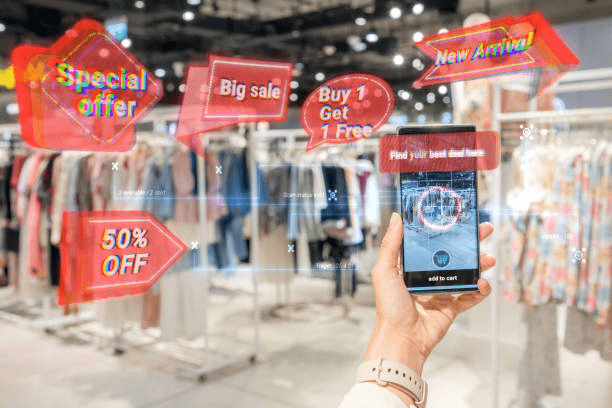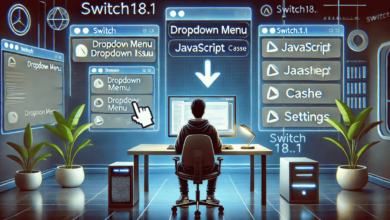The Psychology of Retail POP Displays Combined with Digital Pricing

Retail POP displays and digital pricing strategies are two shopper marketing tools that significantly influence buying behavior at the shelf level. When retailers incorporate strategic design elements into POP displays, it goes beyond just showing displays—they enhance choices and encourage customers to buy beyond what they originally intended. That carefully orchestrated combination not just sells products, but boosts profits.
To B2B sellers, merchandisers, and marketing strategists, combining premium innovative display solutions and modern digital pricing systems has the potential to improve conversion rates and brand metrics. This article explains the construction of effective POP displays alongside electronic price tagging technology as used in supermarkets, while also explaining the psychology behind value perception.
Choices That Shoppers Make Other Than Selecting Items From Shelves/Posters/Supermarket Screens
Regardless of the shopper’s level of consciousness, a series of choices are made at the same time, or in parallel. The fact that over 70% of decisions made concerning purchasing goods are made inside stores emphasizes the importance of these thoughtfully designed POP displays.
These are some of the psychological factors that affect values while moving in the store:
- Focus perception: The use of blue and bright red bold letters and trendy shaped designs capture attention
- Valuation perception: Presentation and discounts affect image and therefore.
- Social proof: Banners displaying categories such as “bestsellers” or “trending now” trigger herd behavior.
- Anchoring: Relative pricing context is crucial, as shoppers are heavily influenced by the first number they see.
Retailers with foresight develop appropriate Point of Purchase (POP) marketing strategies utilizing targeted displays to enhance store aesthetics, while simultaneously addressing shopper behavior concerning their brand and overall store layout.
The Effects of Digital Pricing and Its Psychological Advantages
Pricing conveys a lot more than a number. In comparison with a traditional retail store, a supermarket frequently loses the benefits of operational efficiency and realized opportunities through out-of-date paper price tags. Unlike traditional paper tags which offer little flexibility and are outdated, modern digital pricing solutions like electronic price tags in supermarkets provide controlled pricing that enhances customer perception.
Some of the psychological advantages modern digital pricing come with include:
- Trust and Cohesion: Same price online and in-store.
- Creating Urgency: Can be displayed instantly through flash discounts or limited time offers.
- Easier to Read: Unlike faded paper tags, e-ink and LCD displays are clearer and easier to read.
- Cleaner Aesthetics: Improved presentation of shelves by sleek digital tags reduces clutter.
There is no denying that for B2B suppliers and retail chains, the modernization of price tags is more than just a technological advancement; it is a powerful evolution that enhances decision-making and builds trust in the shopper’s mind.
Merging Creative Display Strategies for Maximum Effect
Using creative display strategies is essential to make POP displays both functional and captivating. If done accurately, they help products stand out while also immersing consumers within the brand. This is of utmost importance in retail settings where competition is high, time spent is low, and variety is abundant.
Best practices for impactful POP displays include:
- Themed zones: Draw attention to a particular collection or promotion´s visuals and tell a story with different visuals.
- Cross merchandising: Group together related items to increase impulse buy.
- Interactive displays: Engage customers using touch screens, AR, or QR codes.
- Motion and lighting: Backlighting or gentle animations have a greater impact than static displays.
Mixing creative display strategies with scientifically informed pricing techniques enables retailers to appeal to emotions and logic, thus forging an experience that drives shoppers from merely browsing to purchasing seamlessly and stylishly.
The Role of Electronic Pricing In Supermarkets POP Strategies
The modern supermarket is a system. The entire supermarket is an ecosystem containing constant fresh goods such as fresh produce, to packaged goods. The shifts in seasons also mean an incredibly busy schedule for any single supermarket. Managing the price of so many SKUs on stock alone is logistical chaos. Electronic price tags in supermarkets and other retail types fully allow relying on a more sophisticated solution. They enable pricing changes for promotions and adapting prices to be done instantly on hundreds of supermarket shelves.
Let us see how digital pricing tags add value to POP displays:
- Synchronization: Prices change automatically with real-time updates during sales and when discounts are offered.
- Targeted advertising: Store branches have the ability to set regions of customary prices either way.
- Narrative advertising: Tags are capable of showing what the product benefits, where the product comes from, or advertising how eco-friendly the item is.
- Less customer dissatisfaction: Automation makes it impossible to mismatch prices using human error. This increases customer satisfaction.
When retailers embed tags into creative shelving techniques, it creates a trusting and welcoming area to shoppers. Creative display ideas and shelving systems showcase integrated intelligence and elegance.
Primary Issues for B2B Retailers
Procurement managers in charge of B2B will need to fold in multiple technologies to get modern adequates working in all POP strategies. Retail aligned with display and pricing solutions must pay attention toward:
- Flexibility: Does this system allocate other pieces of equipment in different places or layouts?
- Modularity: Can you interface it with your POS, inventory and promotions software?
- Supplier reliability: Are your vendors knowledgeable and versed in the hardware and software support?
- User training: Will your team be able to navigate and modify the displays easily after the initial setup?
Creative display ideas combined with digital pricing systems need proper smooth execution of their implementation due to lack of actors who focus on simplicity correction, selected tools to steer clear from the complexities.
Conclusion
The cognitive science of POP displays and digital pricing is not only academic, but rather affects how shoppers navigate in your store, what they see and what they finally purchase. For B2B merchants and businesses, the implementation of electronic shelf labels for supermarkets and redefining crepatur advertising displays represent growth in the retail sector that is highly competitive and experience focused.
Retail spaces can be transformed into smarter and more captivating environments that merge technology with shopping psychology to enhance customer conversion rates. The future of retailing is not simply the items being sold, but how they are arranged, priced, and marketed effectively to do more than just attract attention.




